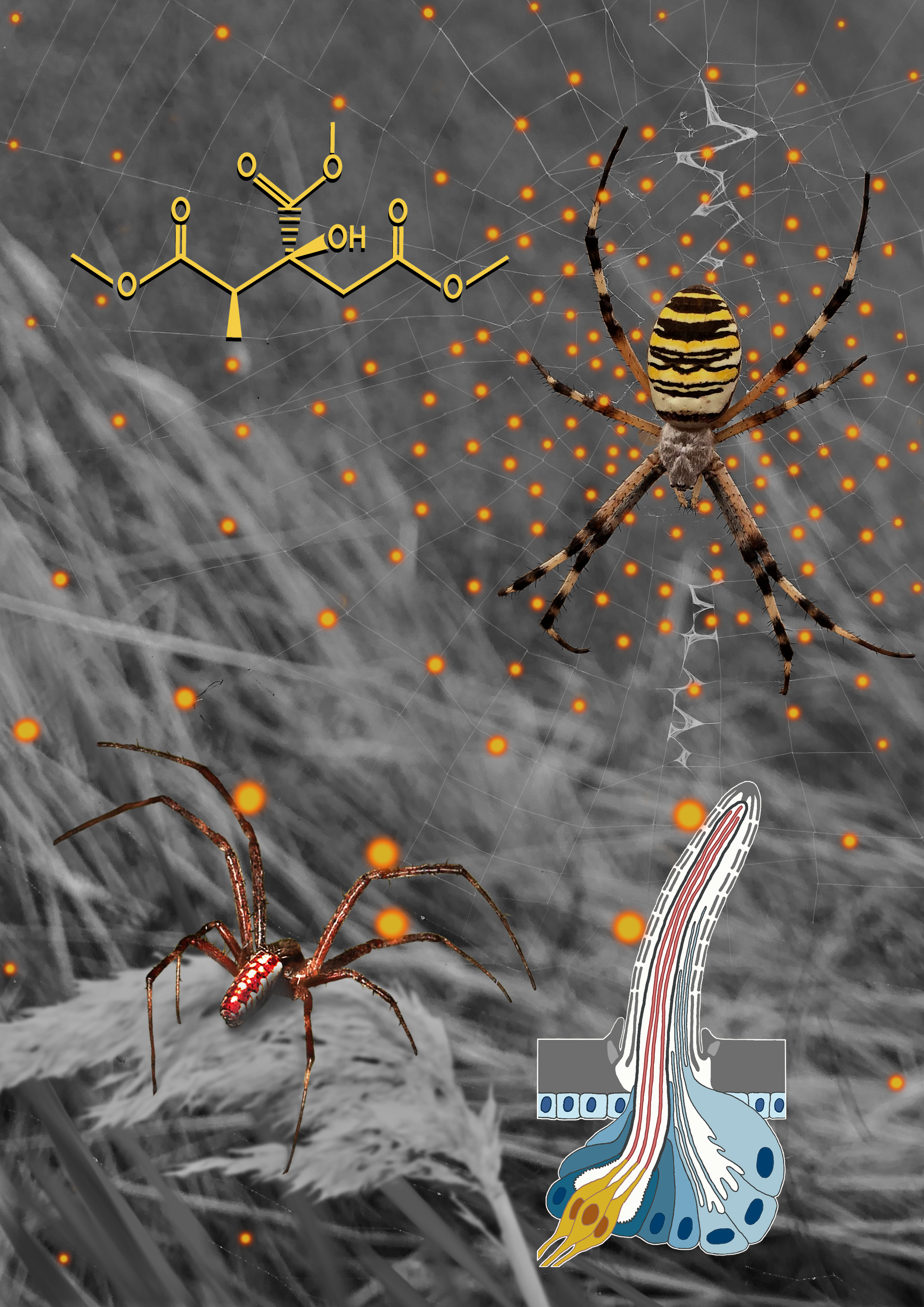Chemosensing is central to the survival and reproductive success of animals and is employed in many different contexts such as prey and predator detection and finding mating partners. Most research has been done on chemosensing in insects and mostly in the context of pheromone research for pest management. Although spiders are considered the most important group of natural enemies of insects by consuming an estimated 400 to 800 million tonnes of insects per year, little is known about the chemosensory world of spiders.
With high-resolution field-emission SEM1, the group around Gabriele Uhl (General and Systematic Zoology) at the University of Greifswald’s Zoological Institute and Museum discovered that male wasp spiders (Argiope bruennichi) possess thousands of sensilla with pores in the wall of the shaft on all legs. The wasp spider is one of only few spider species for which researchers know the sex pheromone that females produce to attract males. Similar to wall-pore sensilla in insects, these hairs are not compact on the inside but filled with lymph that contains extensions of neurons. Dr. Hong-Lei Wang, from the Pheromone Group of Lund University, tested if these sensilla that are exclusive to males react to the species-specific sex pheromone produced by the females. He found a clear and concentration-dependent neuronal response towards the pheromone.
In a comparative screening, these male specific sensilla were found in most but not all of the 19 spider species examined. This preliminary data suggests that olfactory chemosensing with these types of sensilla are not the ground pattern of spiders, but evolved within spiders independently from other arachnid groups and insects.
The researchers will now compare the importance of chemosensing in spider groups with and without these sensilla when it comes to selecting partners, catching prey and avoiding predators, and investigate the morphological differences and molecular equipment involved in chemosensing between insects and spiders. This research advances our knowledge of the ecology of spiders and has general implications for understanding the evolution of olfaction in arthropods.
1) A field-emission SEM is a specialised scanning-electron microscope that allows a magnification of 50 000 times, leading to the discovery of the pores.
Further information:
"Olfaction with legs – spiders use wall-pore sensilla for pheromone detection" was published and is available here: www.pnas.org/doi/10.1073/pnas.2415468121 (DOI: 10.1073/pnas.2415468121).
Contacts:
University of Greifswald
Prof. Dr. Gabriele Uhl
Zoological Institute and Museum
General and Systematic Zoology
+49 3834 420 4242
Gabriele.uhluni-greifswaldde
Lund University
Dr. Hong-Lei Wang
Department of Biology
Pheromone Group
+46 7035 16055
Hong-lei-wangbiol.luse

